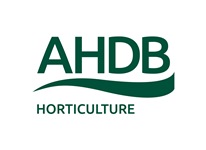All entries for November 2017
November 18, 2017
AHDB Aphid News
The latest edition of AHDB Aphid News has been published.
Peach–potato aphids (Myzus persicae) were recorded from six suction trap sites, increasing in number at two sites. The highest number was found at Writtle (10).
No Mealy cabbage aphids (Brevicoryne brassicae) were recorded this week.
The willow-carrot aphid (Cavariella aegopodii) was found at three sites this week. Nine male individuals were recorded across the country suggesting that the autumn migration back to willows is continuing.
Pest update from Wellesbourne
Between Tuesday, 7th and Teusday 14th November we found the following:
On 3 sticky traps:
- 2 carrot flies
We caught 1 turnip moth in our pheromone traps.
November 10, 2017
AHDB Aphid News
The latest edition of AHDB Aphid News has just been published.
- Peach–potato aphids (Myzus persicae) were caught at seven suction trap sites, increasing in number at two sites. The highest numbers caught were from the suction traps at Wellesbourne (18) and Writtle (18).
- No mealy cabbage aphids (Brevicoryne brassicae) were caught in the suction traps this week.
- The willow-carrot aphid (Cavariella aegopodii) was caught in five suction traps this week. 174 male individuals were caught in suction traps across the country suggesting that the autumn migration back to willows is still continuing.
November 09, 2017
Brassica aphids and virus News
The proportion of peach potato aphid (M. persicae) carrying Turnip yellows virus (TuYV)
|
Date |
Type of trap |
Numbers of M. persicae caught |
% of those tested carrying TuYV |
|
Wellesbourne, Warwickshire |
|||
|
23/10-29/10/2017 |
Suction trap |
12 |
TBA |
|
30/10-06/11/2017 |
Yellow water traps |
3 |
TBA |
|
Kirton, Lincolnshire |
|||
|
23/10-29/10/2017 |
Suction trap |
5 |
TBA |
|
Spalding, Lincolnshire |
|||
|
23/10-30/10/2017 |
Yellow water traps |
TBA |
TBA |
|
30/10-06/11/2017 |
Yellow water traps |
TBA |
TBA |
Turnip yellows virus (TuYV), formerly known as Beet western yellows virus, is a very important pathogen of vegetable brassicas and oilseed rape. It is spread by the peach potato aphid (Myzus persicae).
This data is collected as part of project ‘Developing integrated approaches for pest and disease control in horticultural field crops’ with funding from the BBSRC Horticulture And Potato Initiative (HAPI).
Diana Katschnig and Angela Hambidge, Plant-Virus Interactions Group, University of Warwick; Alex Greenslade, Rothamsted Research & Rothamsted Insect Survey; Carl Sharp, Allium & Brassica Agronomy Ltd.
November 08, 2017
Pest update from Wellesbourne
Between Friday and yesterday (7 November) we found the following:
On 3 sticky traps:
- 1 carrot fly
In 3 water traps in a plot of swedes.
- No cabbage root flies
- 13 bean seed flies
- 2 pollen beetles
We have stopped sampling for cabbage root fly eggs.
We caught 2 silver Y moths in our pheromone traps.
We removed all but the carrot fly traps yesterday. We'll keep the carrot fly traps out throught the winter to understand a bit more about their overwintering biology.
November 06, 2017
AHDB Aphid News
The latest edition of AHDB Aphid News is now available.
-
Peach–potato aphids (Myzus persicae) were caught at nine suction trap sites, increasing in number in eight traps. The highest number caught was from Writtle (35).
- Mealy cabbage aphids (Brevicoryne brassicae) were caught in the traps at Kirton (4) and Wye (4).
- The willow-carrot aphid (Cavariella aegopodii) was caught in five sites this week. 95 male individuals were caught across the country indicating that the autumn migration back to willows is continuing.
Pest update from Wellesbourne
Between Tuesday and Friday (3 November) we found the following:
On 3 sticky traps:
- 12 carrot flies
In 3 water traps in a plot of swedes.
- 1 male cabbage root fly and 1 female
- 2 bean seed flies
- 1 flea beetle
We have stopped sampling for cabbage root fly eggs.
We caught no moths in our pheromone traps.
November 03, 2017
Brassica aphids and virus News
The proportion of peach potato aphid (M. persicae) carrying Turnip yellows virus (TuYV)
|
Date |
Type of trap |
Numbers of M. persicae caught |
% of those tested carrying TuYV |
|
Wellesbourne, Warwickshire |
|||
|
16/10-22/10/2017 |
Suction trap |
12 |
33% |
|
23/10-30/10/2017 |
Yellow water traps |
4 |
0% |
|
Kirton, Lincolnshire |
|||
|
16/10-22/10/2017 |
Suction trap |
26 |
33% |
|
Spalding, Lincolnshire |
|||
|
16/10-23/10/2017 |
Yellow water traps |
3 |
0% |
Turnip yellows virus (TuYV), formerly known as Beet western yellows virus, is a very important pathogen of vegetable brassicas and oilseed rape. It is spread by the peach potato aphid (Myzus persicae).
This data is collected as part of project ‘Developing integrated approaches for pest and disease control in horticultural field crops’ with funding from the BBSRC Horticulture And Potato Initiative (HAPI).
Diana Katschnig and Angela Hambidge, Plant-Virus Interactions Group, University of Warwick; Alex Greenslade, Rothamsted Research & Rothamsted Insect Survey; Carl Sharp, Allium & Brassica Agronomy Ltd.
 Rosemary Collier
Rosemary Collier

 Please wait - comments are loading
Please wait - comments are loading
 Loading…
Loading…
